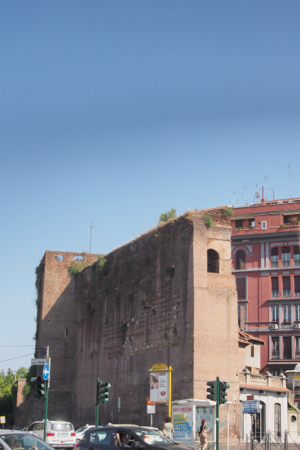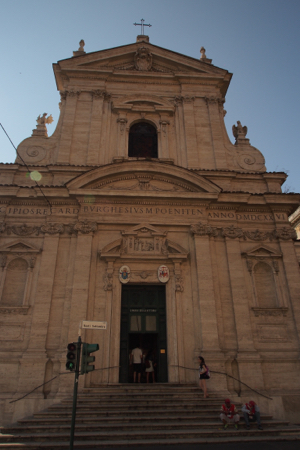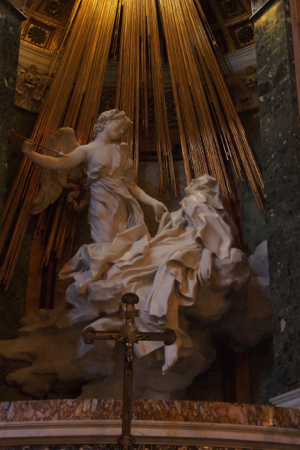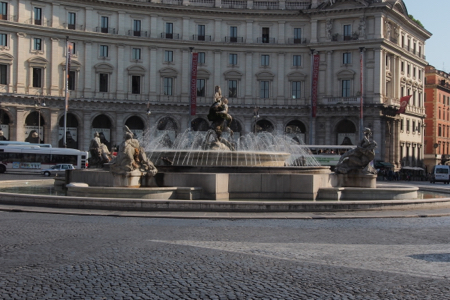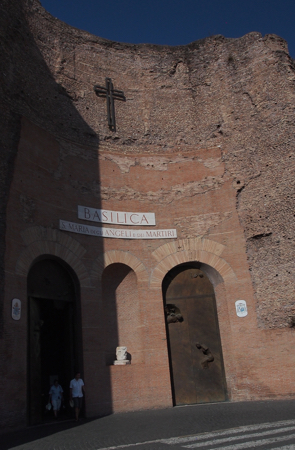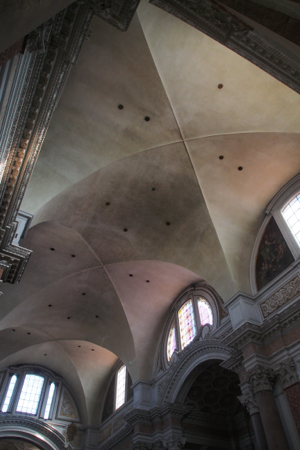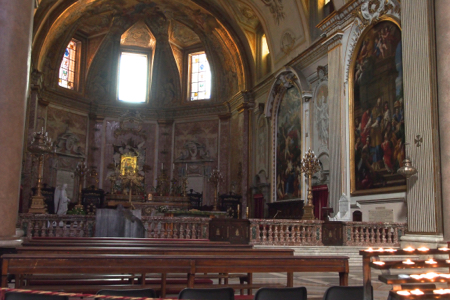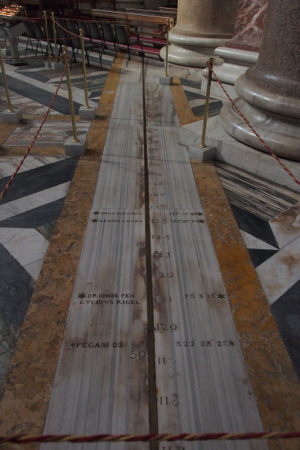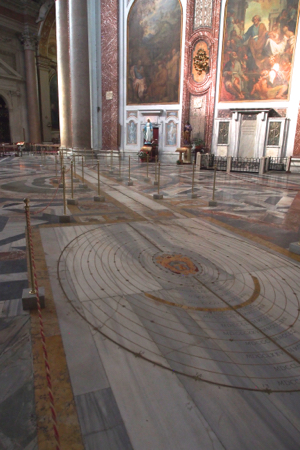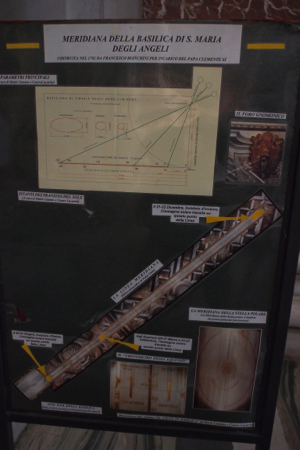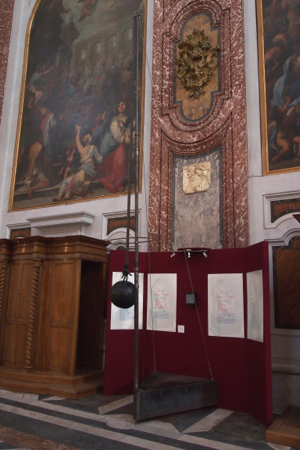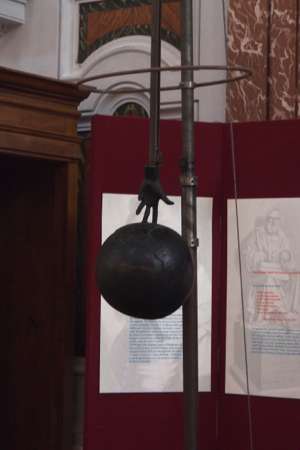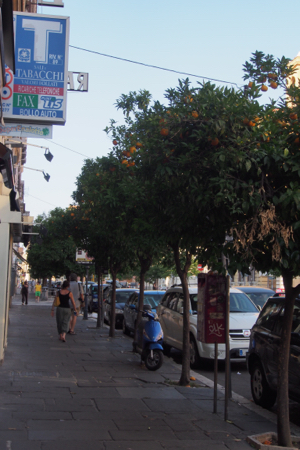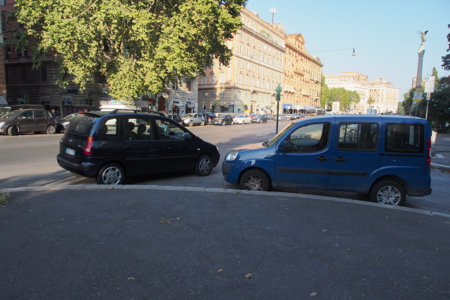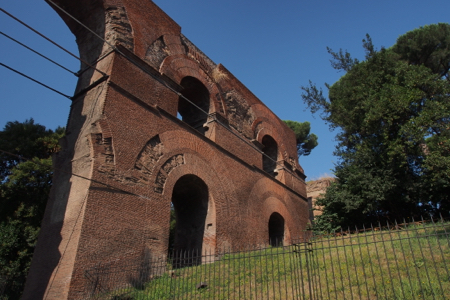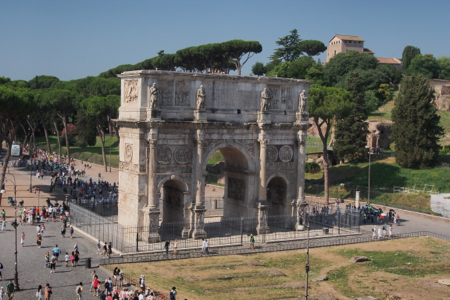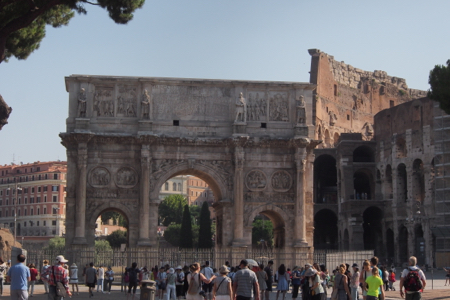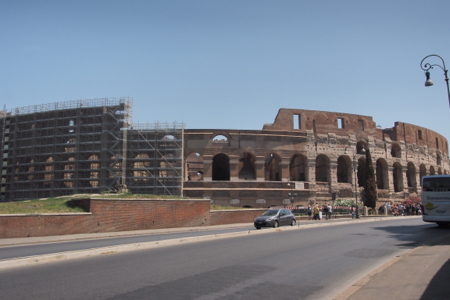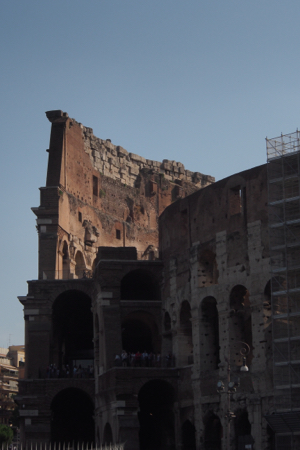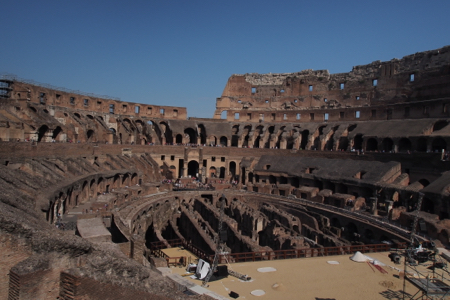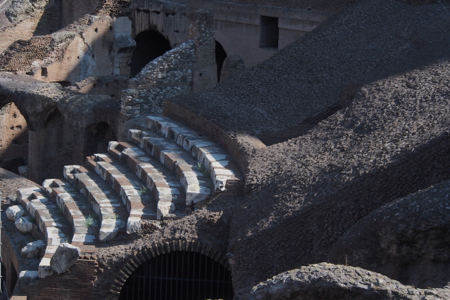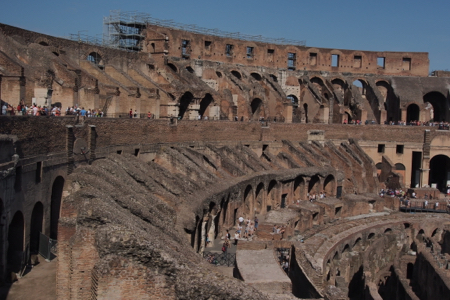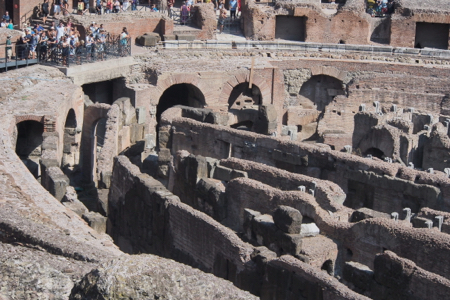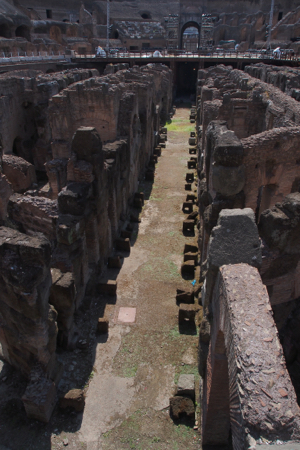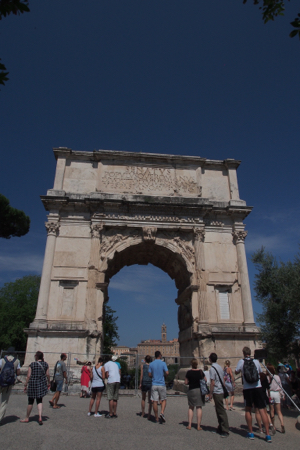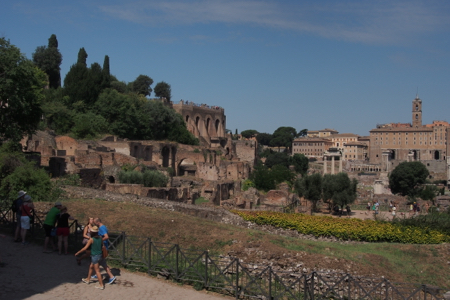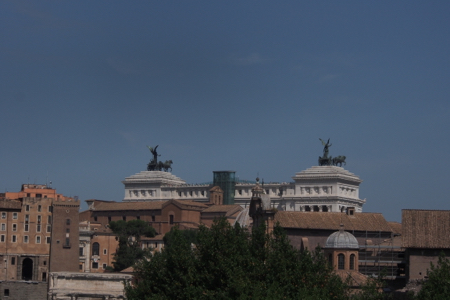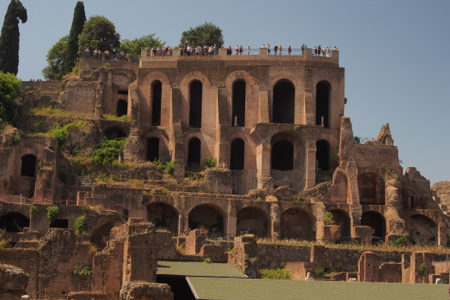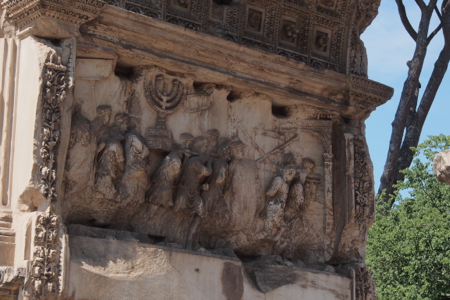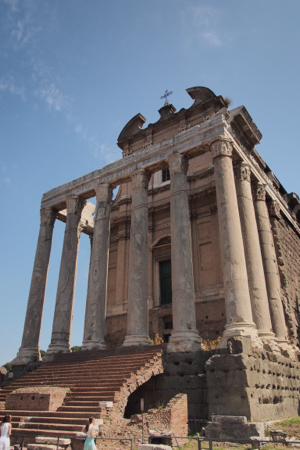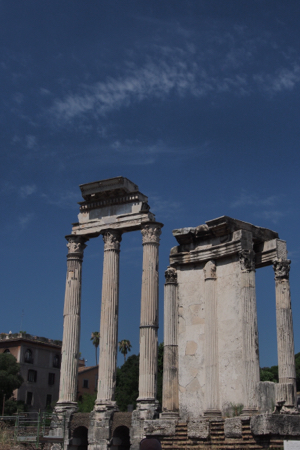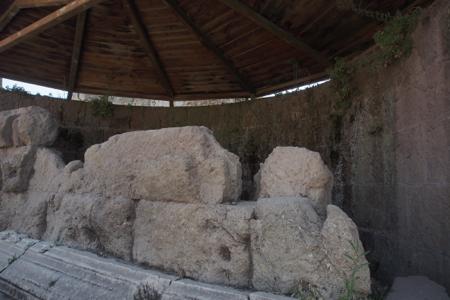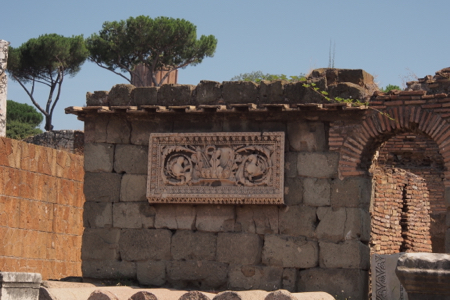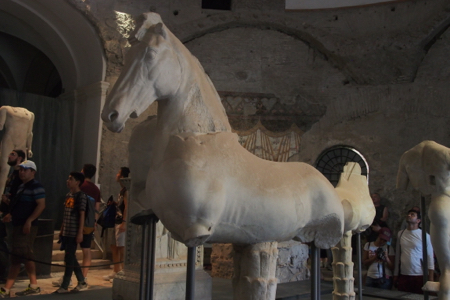After our Vatican tour, we took the old-fashioned #19 trolley back to our hotel where we relaxed, did laundry, and watched Serena win Wimbledon. When we had recovered, we walked out to find two more churches with special art. Bernini’s “St. Teresa in Ecstasy” is in the Church of St. Maria della Vittoria.
#19 Trolley
Smart Car Parking
Old Roman wall
Church of St. Maria della Vittoria
Bernini's St. Teresa in Ecstasy
Fountain of the Naiads on the Piazza della Repubblica
Just a couple blocks (fortunately) from Santa Maria della Vittoria is the wonderful Basilica of Santa Maria degli Angeli e dei Martiri where Michelangelo converted the Diocletian Baths (once the largest in the Roman Empire) into a Christian Church. The original vaulted ceiling remains but everything else is now an elaborate marble church. It also contains a meridian solar line and a display of Galileo’s invention of the pendulum.
Basilica of Santa Maria degli Angeli e dei Martiri
Michelangelo's ceiling in the Basilica of Santa Maria degli Angeli e dei Martiri
Basilica of Santa Maria degli Angeli e dei Martiri
At the beginning of the eighteenth century, Pope Clement XI commissioned the astronomer, mathematician, archaeologist, historian, and philosopher Francesco Bianchini to build a meridian solar line, a sort of sundial, within the basilica. Completed in 1702, the object had the following purposes: the pope wanted to check the accuracy of the Gregorian reformation of the calendar and to produce a tool to predict Easter exactly.
Meridian Solar Line
Meridian Solar Line
Meridian Solar Line
Galileo's Pendulum
Galileo's Pendulum
We walked back to the hotel but stopped for the best ice cream/gelato at La Roma. For 2 Euros they put two scoops of gelato into a cone that has either white or dark chocolate poured into the tip. We had dark chocolate, pistachio, and coffee with chocolate chips. We sat on a bench in the air conditioning to enjoy it and then walked past Porta Pia gate in the Aurelian Walls and back to our hotel around the Albani Villa.
Orange trees along the street
Gale with gelato!
Porta Pia Gate
Creative parking!
Sun., 7/12/15 – Rome – The Coliseum and Roman Forum
Eight of us took the optional tour to the Coliseum and the Roman Forum. We had been to the Coliseum in 2011 from a Holland America tour but it was nice to see it again. The Coliseum is so named because of the Colossus (meaning huge statue) of Nero that was once outside the structure. The Coliseum was built in eight years (72-80 AD) and this year is the first time the outside has ever been cleaned. The last section of scaffolding is on it and the sand blasting is almost done. The white travertine now looks very nice.
While waiting for Giorgia to get our tickets, our guide pointed out the Arch of Constantine and the Roman aqueduct to the Palatine Hill where all of the Roman emperors once lived in palaces. The Palatine Hill is where Romulus and Remus supposedly created the city of Rome.We finally got inside the Coliseum. It is estimated that in 100 days of one emperor’s reign during a celebration, 3,000 animals and 1,500 gladiators were killed. The Coliseum was used for the bloodiest of events. The floor does not remain so we look down on the subterranean rooms of the gladiators, slaves, and Christians to be killed and where the animals were kept. There were 28 elevators each turned by two slaves that brought the animals up to the dirt floor. Men, and women, accompanied by men, filled the stadium seats and single women were confined to the highest balcony. One thousand marines were used to hold the ropes of sails over the top to provide shade for the spectators. The Coliseum was used for 350 years. It is a stunning place to visit.
Roman aqueduct to the Palatine Hill
Arch of Constantine
Arch of Constantine
Arch of Constantine
Coliseum
Coliseum
Coliseum
Coliseum
Coliseum
Coliseum
Coliseum
Coliseum
Coliseum
We walked up over a hill to the ruins of the Forum where all religious, political, and commercial business was conducted during the days of the Roman Empire. There were several pagan temples, the senate building, and a wall for orators. Julius Caesar was killed here and cremated on a stone altar. I could visualize the toga filled activities of the past.
We walked up the Palatine Hill with the ruins of the palaces in order to exit.
Arch of Titus
Arch of Titus
The Roman Forum
The Roman Forum
The Roman Forum
The Roman Forum
The Roman Forum
The Roman Forum
The Roman Forum
The Roman Forum
The Roman Forum
The Roman Forum
| Return to Top | Return to Itinerary | Return to Trips page to view other trips | Return to Dreamcatcher Home Page |


